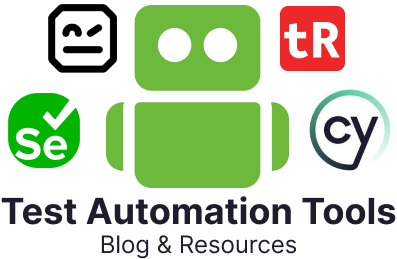
Tricentis Tosca boasts a lot of big brand name customers, but it isn’t necessarily the best choice for every team in every situation.
If your team is evaluating which software testing tools to use moving forward, it’s important to understand the pros and cons of a tool like Tricentis Tosca to see if the fit makes sense. To help you in this endeavor, here is a summary of the benefits and drawbacks of Tricentis Tosca, along with a summary of important information gleaned from consumer reviews.
Overview of Tricentis Tosca
Tricentis Tosca is a software testing automation tool developed by Tricentis, a software company focused on providing software testing solutions to the enterprise market.
Located in Mountain View, California, Tricentis is at the heart of Silicon Valley and has more than a thousand employees across many offices worldwide. Tricentis also boasts that it is the global leader in enterprise continuous testing and is said to be widely credited for reinventing software testing for DevOps. To its credit, Tricentis has been named the leader in Gartner’s Magic Quadrant for several consecutive years and has major brand name customers among its customer base exceeding 1,800 customers.
Tricentis has been around since 2007 and is backed by $172 million in previous rounds of funding, while Tricentis Tosca has been around for much of that time, so you can consider this company and product to be established and mature.
Tricentis Tosca feature highlights
- Vision AI uses artificial intelligence and machine learning to automate tests that were challenging to automate in the past, like tests that were run on remote desktops. Vision AI enables customers to automate testing based on visual cues, independent of any underlying technology, which makes it effective with testing remote desktop applications and even makes it possible to start building tests based on mockups. Vision AI also provides self-healing test capabilities and can be trained to automate tests for custom and proprietary applications that may have controls that are hard to identify.
- Model-based test automation separates the technical information from the automation model for the application being tested, enabling customers to build codeless and resilient tests.
- Risk-based test optimization allows teams to focus on the most important tests while cutting unnecessary tests out of the automated testing process, reducing overall test creation and maintenance costs and improving coverage for the most business-critical areas of focus.
- Service virtualization allows customers to set up realistic services that behave precisely as specified, making it easier to test responses from systems that are difficult to access or provision, or perhaps haven’t even been built yet.
- Test data management enables teams to automatically create and provision on-demand stateful data, whether it be synthetic, masked, or imported.
- Distributed execution facilitates running multiple tests in parallel across distributed infrastructures and virtual machines.
- API scan is a codeless solution for API testing that includes support for REST, SOAP, and converting SoapUI projects to Tosca API testing for improved reusability of tests.
- Automation recording assistant is the Tricentis Tosca feature for recording actions for conversion into automated tests.
- Mobile testing features facilitate end-to-end testing on native, hybrid apps, and mobile websites on iOS and Android devices.
- Dashboards provide a web-based reporting solution, making it easy to create and share reports.
Positives from market feedback
- Easy to onboard new users
- Codeless features are suitable for less technical team members
- Dynamic handling of objects is easy
- Reusability of test cases is strong
- Vendor support
Negatives from market feedback
- May be difficult to perform looping or set up conditions with codeless testing features
- Pricing may be too high for some groups, especially smaller teams
- Despite a large customer base, community based support and collaboration may seem lacking
- May be lacking some integrations that may be important for your team like Git
- Metadata management may be challenging
- Difficult user governance
- May be challenging and costly to integrate with other tools
- Reporting on test progress could be better
- Lack of support for coding may frustrate technical team members
Pricing
As you might expect from a solution provider that is primarily focused on the enterprise market, pricing for Tricentis Tosca requires reaching out to the sales team to get a quote. That said, many folks consider Tricentis Tosca to be pricey, especially for smaller teams, so be sure to consider alternatives like testRigor, Mabl, and other automation testing systems.

